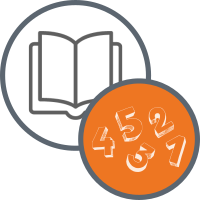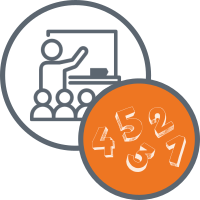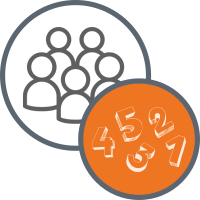You are here
Mathematics Intervention for Teachers

Mathematics Intervention at the Teacher Level
We honor the incredible work teachers do every day. Teaching math is challenging, especially when students come to class with vastly different levels of understanding. The most effective way to reduce the need for interventions is to make classroom instruction as strong as possible, ensuring all students have access to high-quality learning experiences. However, even in the best classrooms, some students will need extra support. Here are practical resources to help you implement effective math interventions and support every learner’s success.
Improving Mathematics Teaching and Learning at the Classroom Level
As a general rule, if more than 10 to 20 percent of a class is in need of intervention, educators should suspect a problem with whole-class instruction. Here are some ways educators can attempt to improve mathematics learning across multiple topics for large groups of students.


Quality Curriculum
Curriculum should align with the standards and be logically sequenced to help students build new knowledge using what they already know. CDE maintains a list of high-quality instructional materials and tools for reviewing materials yourself.

Effective Teaching Practices
Teachers need a variety of skills to help students with their needs. CDE has summaries of NCTM's effective mathematics teaching practices and equity-based teaching practices.

Professional Development
Teachers are learners, too, and need opportunities to develop in their profession. For teachers of mathematics, there are multiple state and national organizations that provide professional learning opportunities for teachers.
Math Intervention Models and Tools
The following list serves as a compilation of potential resources. CDE strongly recommends that school districts conduct thorough vetting to ensure alignment with local guidelines for instructional materials. By school districts ensuring customized interventions for their distinct needs and standards, they can establish a resilient foundation for academic success in mathematics.
High-impact tutoring offers personalized attention, targeting individual learning gaps.
- CDE High Impact Tutoring
- National Student Support Accelerator at Stanford University
- EdResearch on High Impact Tutoring
Double dose math programs offer extended instructional time, reinforcing foundational concepts and filling gaps while keeping up with grade level.
Math intervention tools, such as specialized software or manipulatives, may provide interactive and targeted assistance to struggling learners.
Quality summer programs may provide additional learning opportunities and work on mathematical mindset.
Online Tools and Resources
The following list presents diverse tools and resources for educators' consideration. CDE strongly advises school districts to conduct thorough reviews of these resources to guarantee alignment with local guidelines for instructional materials. Customizing interventions in accordance with district needs and standards ensures an effective and tailored support system for struggling learners.
- National Center on Intensive Intervention American Institutes for Research (AIR) includes information and ratings on the technical rigor of a study's (a) quality of design and results, (b) quality of other indicators, (c) intensity and (d) additional research. Specifically, the Academic Intervention Tools Chart can be filtered to show just those intervention tools that relate to mathematics with the most convincing evidence of their effectiveness.
- Evidence-Based Intervention Network (EBI Network), categorizes math interventions as (a) acquisition (the task is too hard for the student), (b) proficiency (the student needs fluency), (c) generalization (the student has not done the task that way before) and motivation (the student does not want to do the task). Within each category, interventions are listed with full intervention briefs describing the function of the intervention, the setting, alignment to standards domains, procedures, critical assumptions, materials and supporting research.
- What Works Clearinghouse (WWC), an initiative by the U.S. Department of Education, evaluates and summarizes research on education programs, practices and policies with a goal to provide educators, policymakers. WCC assesses the effectiveness of various interventions, ranging from instructional strategies to educational programs, and disseminates this information through reviews and reports.
- The Colorado English Language Proficiency Standards provides Colorado educators with resources to develop mathematical language in all students. The 'Can Do' descriptors are a particularly helpful entry point to the standards.
- Open access mathematics materials for emerging bilingual learners of English, released by Understanding Language, were developed using research-based principles for designing mathematics instructional materials and tasks from two publicly accessible curriculum projects, Inside Mathematics and the Mathematics Assessment Project. Each lesson supports students in learning to communicate about a mathematical problem they have solved, to read and understand word problems or to incorporate mathematical vocabulary in a problem-solving activity.
Mathematics Intervention Home Page
Mathematics Intervention at the Student Level
Mathematics Intervention at the Institutional Level
Related Links
- Definition of "Below Grade Level" or "Struggling in Math"
- Intervention Rubrics to Improve Math Outcomes
- Math Intervention Toolkits
- Subscribe to the CoMath Listserv for information to support quality mathematics education in Colorado and updates regarding House Bill 23-1231.
Have questions for the math team? Email mathacceleration@cde.state.co.us.
For further assistance, please contact:



Connect With Us





